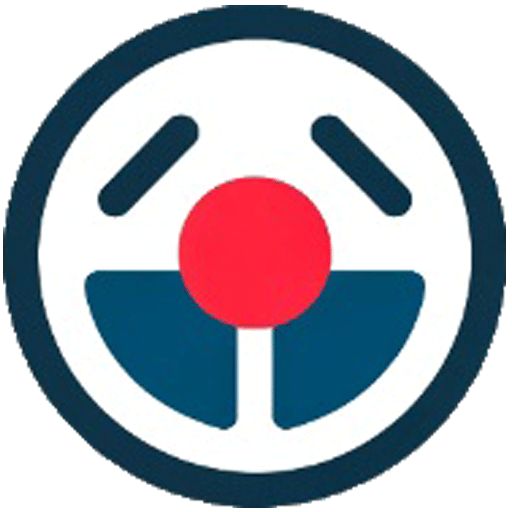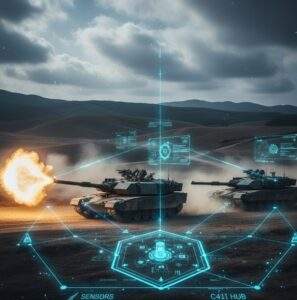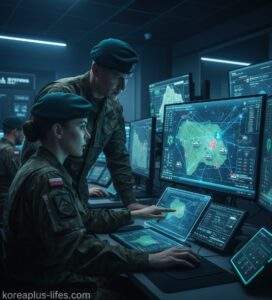Beyond the ‘Big 3’: What Is the K-Defense Ecosystem?
The global defense market is, rightly, fixated on South Korea’s “Big 3” export platforms: the K2 Black Panther tank, the K9 Thunder self-propelled howitzer, and the FA-50 light combat aircraft. From Warsaw to Riyadh, these systems are synonymous with the rapid, reliable, and cost-effective rise of “K-Defense.”
But this focus on individual platforms misses the forest for the trees. Analyzing these weapons in isolation is like analyzing a single neuron without acknowledging the brain.
From a perspective in Seoul, the real product and the core of K-Defense’s export success is not the hardware itself. It is the export of a ‘System of Systems’ (SoS)—a fully integrated, scalable, and networked battlefield ecosystem. The “secret sauce” is the C4I (Command, Control, Communications, Computers, and Intelligence) architecture that binds these platforms into a single, cohesive fighting force.
What US and European buyers are discovering is that K-Defense isn’t just selling a tank; it’s selling the entire network that makes the tank lethal.
Beyond the Hardware: Why the ‘K-Defense Ecosystem’ Matters
To understand the ‘K-Defense Ecosystem’, one must first understand the unique security challenge that created it. This entire doctrine is a direct response to South Korea’s existential threat: a numerically superior, nuclear-armed North Korea.
The ‘System of Systems’ as a Strategic Imperative
From a perspective in Seoul, the only viable counter to this threat is a hyper-connected, AI-driven, network-centric force that can see, decide, and strike faster than its adversary. This necessity drove the ROK military to invest heavily in a ‘System of Systems’ (SoS) approach, where the value is derived from the network connecting the assets, not just the assets themselves.
A Response to a Unique Threat
This C4I-first doctrine is the foundation of the K-Defense export model. The hardware (tanks, planes, artillery) is merely the “effector” or the “sensor” within this larger digital architecture.
The Seoul Insider View: What is ‘Defense Innovation 4.0’?
What analysts in Korea refer to as ‘Defense Innovation 4.0’ (국방혁신 4.0) is the formal name for this strategy. It is not a mere marketing buzzword; it is the ROK Ministry of National Defense’s official doctrine to build a smaller, smarter, and faster military.
The ‘Native Interoperability’ Differentiator
This is where the K-Defense advantage was born. Unlike many Western systems developed decades apart and later “patched” together for interoperability, Korea’s primary platforms were developed natively under this C4I-first doctrine. The K2 tank, K9 howitzer, and K239 Chunmoo MLRS were conceived from the outset to share data and operate as a networked team. This “native interoperability” is the key differentiator that procurement officials in partner nations are finding impossible to ignore.
C4I in Focus: The ‘Brain’ of the K-Defense Export Model
C4I is the central nervous system of this ecosystem. It is the digital architecture that connects sensors (like drones, satellites, and frontline reconnaissance) to deciders (command centers) and “effectors” (the K9s, K2s, and missile launchers) in real-time.
Shortening the ‘Sensor-to-Shooter’ Loop
In the K-Defense model, this system is exceptionally potent because it dramatically shortens the “sensor-to-shooter” loop. Imagine a ROK Army drone spotting an enemy artillery unit. That targeting data doesn’t need to be called in over the radio. It is fed directly into the Battle Management System (BMS), which instantly calculates the firing solution and automatically transmits it to the nearest available K9 howitzer battery.
Plug-and-Play’ Scalability
This ecosystem model allows purchasing nations to buy a ‘solution-in-a-box’. A country can start small, perhaps only purchasing K9 howitzers. Later, as its budget and needs expand, it can acquire K2 tanks or Chunmoo rocket systems and “plug” them directly into the same C4I network, which recognizes and integrates them immediately. This “plug-and-play” capability is a core part of the export package, providing a future-proof path for military modernization.
Case Study: Why Poland Bought a ‘System,’ Not Just Tanks
The 2022-2023 Polish defense contracts are the single greatest proof point for this strategy.
A Misunderstanding by Western Media
When the news first broke, most US and European media reported the deals as three massive, but separate, hardware contracts for K2s, K9s, and Chunmoo MLRS.
The Real Demand: Total Interoperability
But local reporting in Seoul, and subsequent analysis, focused on a different, more strategic demand from Warsaw: total and immediate interoperability between all three platforms. Poland, facing a resurgent Russia, did not have the luxury of spending a decade trying to make its new systems talk to each other. It needed a complete, proven, and integrated land warfare solution, and it needed it now.
Hanwha Systems: The ‘Deal-Making’ Integrator
This is where Korean C4I giant Hanwha Systems became the quiet “deal-maker.” The company provided the C4I solutions and Battle Management System that effectively “glued” all the platforms together. Poland wasn’t just buying hardware; it was buying a complete, pre-integrated land warfare architecture based on the ROK Army’s own field-tested design. They bought the entire ecosystem.
The Domestic Landscape: The C4I ‘Co-opetition’
From Seoul, the C4I landscape is a fascinating “co-opetition” that serves to de-risk and battle-harden the technology before it ever reaches the export market. While most foreign observers simply see “Hanwha,” the reality is more nuanced:
Hanwha Systems: The Tactical ‘Brain’
This is the dominant force in tactical C4I and Battle Management Systems (BMS). It provides the “brain” and operating system for many land platforms, such as the C4I system for the K239 Chunmoo MLRS and the combat systems for ROK Navy destroyers.
LIG Nex1: The ‘Eyes and Ears’ of the Network
This firm is a critical player in the “sensor” and “network” segments. It specializes in the advanced radars, electronic warfare (EW) suites, and secure communication datalink technologies that feed the C4I network with information. This fierce domestic competition ensures that by the time these systems are offered for export, they are deeply integrated and represent the ROK military’s best-in-breed solutions.
Analyst Take: The Future of K-Defense’s ‘System of Systems’ Export
From Hardware Vendor to Capability Provider
The K-Defense industry has fundamentally and strategically shifted from being a mere hardware vendor to a holistic capability provider. This is its true competitive advantage. While a competitor might sell a high-performance jet, K-Defense sells the jet plus the C4I backbone, the ground-based radar, the integrated air-defense missile network, and the tech-transfer package to maintain it.
The Next Frontier: Air and Naval Networks
What analysts in Korea are noting is that this “system” model is now being applied to air and naval domains. The success of the KF-21 fighter, for example, will not just be the airframe, but its ability to network with Korea’s “Low-Altitude Air Defense” (L-SAM) systems and naval destroyers equipped with Aegis-baseline combat systems.
The future of K-Defense’s high-value, high-RPM growth isn’t just in selling more tanks to more countries. It’s in selling its entire network-centric warfare architecture to nations that want to modernize their entire military doctrine, not just their inventory.
Hi, I’m [jeybee]. As a long-time resident of Seoul, I’m passionate about uncovering the authentic, everyday magic of Korea. This blog is my way of sharing my favorite spots, tips, and cultural insights with you, beyond the usual tourist traps.




